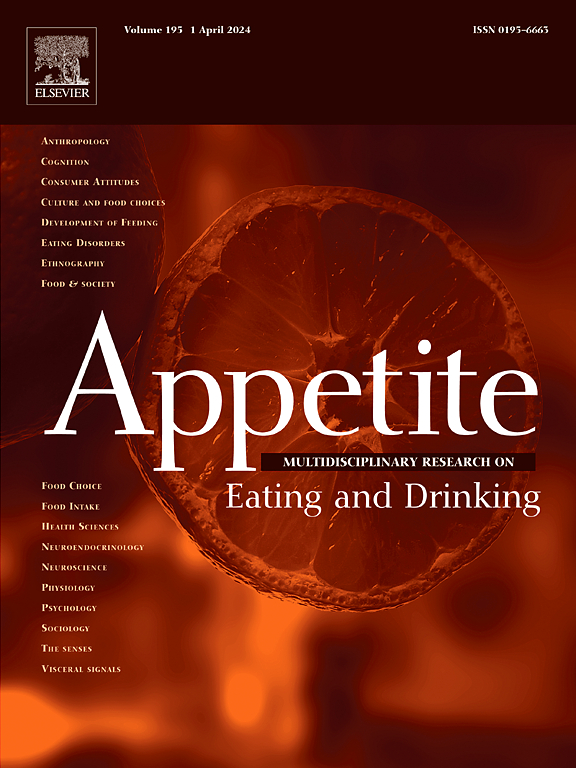住房成本与食品购买特征:SNAP参与和SNAP购买力的作用。
IF 3.8
2区 医学
Q1 BEHAVIORAL SCIENCES
引用次数: 0
摘要
住房成本占低收入家庭预算的很大一部分,限制了用于购买食品的资金。我们的目的是评估1)地区和家庭层面的住房成本与家庭层面的食品购买特征的关联,2)探索补充营养援助计划(SNAP)参与和SNAP购买力在这些关联中的调节作用。家庭层面的数据来自全国家庭食品获取和购买调查(FoodAPS; n=3707个家庭),包括分析的结果:每500千卡的支出、购买的总千卡和购买的食品质量。暴露的风险包括住房成本负担(即,将每月收入的30%用于住房)和美国住房和城市发展部的小区域公平市场租金(FMR),作为区域级住房成本的衡量标准(即,大都市地区的邮政编码,非大都市地区的县)。调节因子是SNAP参与和SNAP购买力(即SNAP最大福利金额与节俭食品计划的当地成本之比)。我们运行线性回归模型,调整了家庭和地区水平的协变量。在SNAP购买力较低的地区,较高的FMR与SNAP参与者(B=0.039, 95%CI=0.009,0.069)、符合条件的非SNAP参与者(B=0.030, 95%CI=0.012,0.048)和不符合条件的非SNAP参与者(B=0.020, 95%CI=0.004,0.036)每500千卡的较高支出相关。在SNAP购买力高的地区,较高的FMR与SNAP参与者较低的总千卡购买量相关(B=-0.084, 95%CI=-0.141,-0.028)。在地区和家庭层面的住房成本和购买的食品质量之间没有明显的联系。SNAP的参与可能无法完全缓解低收入家庭生活在高住房成本地区的营养后果。本文章由计算机程序翻译,如有差异,请以英文原文为准。
Housing costs and food purchasing characteristics: The role of SNAP participation and SNAP purchasing power
Housing costs account for a significant proportion of low-income households' budgets, limiting the amount of money left for food purchases. We aimed to assess 1) the association of area- and household-level housing costs with household-level food purchasing characteristics and 2) explore the moderating effect of Supplemental Nutrition Assistance Program (SNAP) participation and SNAP purchasing power in these associations. Household-level data come from the National Household Food Acquisition and Purchase Survey (FoodAPS; n = 3707 households), including the outcomes analyzed: spending per 500 kcal, total kcal purchased, and quality of food purchased. Exposures include being housing-cost burdened (i.e., spending >30 % of monthly income on housing) and the U.S. Department of Housing and Urban Development's Small Area Fair Market Rent (FMR) as a measure of area-level (i.e., zip code in metro areas, county in non-metro areas) housing costs. Moderators were SNAP participation and SNAP purchasing power (i.e., the ratio of the max SNAP benefit amount to the local cost of the Thrifty Food Plan). We ran linear regression models adjusted for household and area-level covariates. In areas with low SNAP purchasing power, a higher FMR was associated with higher spending per 500 kcal for SNAP participants (B = 0.039, 95 %CI = 0.009,0.069), eligible non-SNAP participants (B = 0.030, 95 %CI = 0.012,0.048), and ineligible non-SNAP participants (B = 0.020, 95 %CI = 0.004,0.036). In areas with high SNAP purchasing power, a higher FMR was associated with lower total kcal purchased for SNAP participants (B = −0.084, 95 %CI = −0.141,-0.028). No significant associations were identified between either area- nor household-level housing costs and quality of food purchased. SNAP participation may not fully buffer low-income households from the nutritional consequences of living in areas with high housing costs.
求助全文
通过发布文献求助,成功后即可免费获取论文全文。
去求助
来源期刊

Appetite
医学-行为科学
CiteScore
9.10
自引率
11.10%
发文量
566
审稿时长
13.4 weeks
期刊介绍:
Appetite is an international research journal specializing in cultural, social, psychological, sensory and physiological influences on the selection and intake of foods and drinks. It covers normal and disordered eating and drinking and welcomes studies of both human and non-human animal behaviour toward food. Appetite publishes research reports, reviews and commentaries. Thematic special issues appear regularly. From time to time the journal carries abstracts from professional meetings. Submissions to Appetite are expected to be based primarily on observations directly related to the selection and intake of foods and drinks; papers that are primarily focused on topics such as nutrition or obesity will not be considered unless they specifically make a novel scientific contribution to the understanding of appetite in line with the journal's aims and scope.
 求助内容:
求助内容: 应助结果提醒方式:
应助结果提醒方式:


